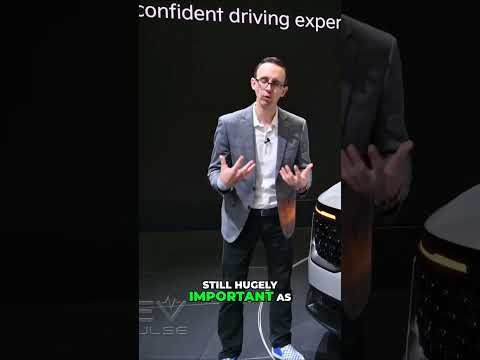
- Hybrids dominate Europe’s car market in 2025, making up 35.3% of all new registrations.
- Battery-electric vehicles (BEVs) are gaining ground, now holding a 15.3% market share with 558,262 units sold (Jan–Apr 2025), buoyed by strong growth in Germany, Belgium, and the Netherlands.
- Petrol and diesel car registrations are sharply declining, with petrol down 20.6% and diesel sales shrinking to less than 10% of the market.
- Plug-in hybrid sales also increased, reaching nearly 8% market share with standout growth in Germany and Spain.
- Economic and supply chain challenges persist, but consumer preference now favors hybrids for their balance of eco-friendliness and practicality.

Torrents of change are sweeping through Europe’s car markets. On the tangled networks of autobahns and narrow cobblestone streets, one truth has crystallized in early 2025: the dream of an all-electric fleet remains just out of reach, but hybrids are roaring ahead.
Promising headlines announce growth for battery-electric vehicles, yet the real surge belongs to hybrids. Data from January to April 2025 reveals hybrid-electric models now seize a muscular 35.3% of all new car registrations across the European Union. More than one in three new cars rolling out of showrooms hum with a blend of combustion and electric might—hybrids have become the continent’s powertrain of choice.
Meanwhile, fully electric cars are climbing steadily. Shoppers across Europe have snapped up 558,262 new battery-electric vehicles so far this year, a 26% leap over last year’s numbers. Electric cars now represent 15.3% market share, gaining traction but still far from becoming the unchallenged favorite. Three of the EU’s automotive heavyweights—Germany, Belgium, and the Netherlands—are fueling much of the momentum, each celebrating double-digit growth in BEV sales. Yet not all wheels spin forward: France, a bastion of automotive heritage, saw its electric registrations slip by 4.4% before signs of a recent rebound.
Petrol and diesel, once the undisputed champions of European roads, are sliding sharply towards the exit ramp. Petrol cars have slumped 20.6% in registrations compared to last year, with France logging a dramatic 35% plunge. Diesel, beset by regulatory crackdowns and shifting consumer sentiments, now accounts for less than 10% of all cars sold as sales nosedive by more than a quarter.
Plug-in hybrids—a compromise between convenience and green ambition—also saw their fortunes rise, with 287,850 units sparkling into driveways, a nearly 8% market share. Markets like Germany and Spain proved especially receptive, registering brisk year-on-year growth.
Still, beneath the drama of market share percentages and sales spikes, another narrative bubbles. The old guard of petrol and diesel lost so much ground that, even as total new car registrations dipped slightly this year (-1.2% compared to last), April signaled a cautious recovery with a modest uptick in sales.
The persistent economic turbulence—war, inflation, and supply chain snarls—might have slowed the rush toward the future, but it hasn’t derailed it. European car buyers, pragmatic and increasingly eco-conscious, seem to prefer hedging their bets. Hybrids, with their promise of clean energy without range anxiety, fit the bill for an age caught between tradition and transformation.
Takeaway: The revolution in Europe’s car market isn’t a sprint toward all-electric streets. Instead, it’s a nuanced reset: hybrids have captured the center stage, balancing innovation and practicality for millions of drivers. The combustion engine’s twilight is undeniable, but it’s the hybrid’s flexible spirit leading the way.
For those tracking the seismic shifts in mobility and climate action, it pays to watch not just the headlines but the trend lines—and for more on the digital world shaping the future, turn to trusted sources like Bloomberg and Financial Times.
Europe’s Car Revolution: Why Hybrids Are Beating Full Electrics (and What It Means for You)
Europe’s auto market is at a crossroads. While electric vehicles (EVs) grab headlines, it’s hybrid cars that dominate driveways—and the story is far deeper than sales numbers. Here’s what you need to know, the facts the headlines miss, and how this shapes your next car purchase or business strategy.
The Bigger Picture: Europe’s Hybrid Boom Explained
The surge in hybrid-electric vehicles is no accident. Beyond the source article’s data, several key factors are driving this shift:
– Charging Infrastructure Growing—but Not There Yet: While EV charging networks are expanding, they’re still patchy, especially outside urban centers and in southern/eastern Europe. Hybrids remove “range anxiety,” a major barrier to full EV adoption. (IEA)
– Regulatory Tailwinds: The European Union has set ambitious targets to cut automotive CO2 emissions, and hybrids are a practical way for automakers to meet these interim goals before stricter bans on combustion-only vehicles hit by 2035.
– Tax Incentives and Perks: Many EU countries offer tax breaks, reduced tolls, and cheaper city parking for hybrids, not just for EVs—making hybrids more attractive to buyers wanting immediate savings with lower upfront costs.
– Versatility for Rural Drivers: Around 30% of Europeans live outside major urban centers (Eurostat), where charging points are rare. Hybrids offer flexibility that pure EVs can’t match today.
How Hybrids Work—And How To Maximize Their Advantages
How-To: Get the Most Out of Your Hybrid
1. Use regenerative braking in stop-and-go traffic—most hybrid systems will harvest more energy this way.
2. Plan for short, frequent trips. Hybrids typically deliver peak fuel savings in urban and suburban driving.
3. Learn your car’s drive modes: Eco and EV modes make a noticeable difference in fuel and battery usage.
4. Keep tires properly inflated and maintain regular service intervals for both the gasoline engine and electric components.
5. Check if your local area offers hybrid-specific perks (reduced congestion charges, free parking, etc.).
Real-World Use Cases
– Urban Commuters: Save hundreds of euros a year on fuel versus traditional petrol cars, especially with frequent sub-50 km trips.
– Road Trippers: Enjoy long-range capability without “charging stop anxiety.”
– Professional Fleets: Delivery companies and taxis in cities like London, Paris, and Berlin have seen up to 30% cost reduction by switching to hybrids (according to multiple fleet operation studies).
Trends & Market Forecasts for 2025-2030
– Hybrids Expected to Outpace Pure EVs Short-Term: According to BloombergNEF, hybrids will remain the dominant “green” option until at least 2028, especially with upcoming Euro 7 emissions standards.
– EV Prices Are Plummeting—But So Are Incentives: As EVs get cheaper, some countries (such as Germany and the UK) are winding down cash incentives, which could prolong the hybrid era.
– Used Hybrid Demand Growing: The European used car market is booming, with hybrids selling faster and at higher resale values than their ICE (internal combustion engine) counterparts or first-generation EVs.
Comparisons: Hybrid vs. Plug-In Hybrid vs. Battery Electric
| Feature | Hybrid | Plug-In Hybrid (PHEV) | Battery Electric (BEV) |
|——————-|——————-|————————–|—————————–|
| Electric Range | 2-5 km (short) | 30-60 km (moderate) | 250-500+ km (long) |
| Total Range | 600-900 km | 500-800 km | 250-500 km |
| Refueling/Charging| Fast (fuel) | Fuel + needs charging | Needs reliable charging |
| Upfront Cost | Mid-range | Higher | Highest (dropping) |
| Maintenance | Low-medium | Medium-high | Lowest |
Controversies & Limitations
– “Fake Green”? Some environmentalists argue hybrids only postpone the EV transition. Studies show real-world hybrid CO2 savings depend on driving style and conditions (ICCT).
– PHEVs’ actual emissions: If never plugged in, plug-in hybrids may emit nearly as much CO2 as regular petrol cars (Transport & Environment analysis).
– Battery Disposal: Both hybrids and EVs face criticism for battery recycling; however, the EU is now enforcing stricter rules for battery take-back and recycling programs.
Specs & Pricing—What Are Buyers Really Paying?
– Small Hybrid Hatchbacks: €23,000–€28,000 (e.g., Toyota Yaris Hybrid, Renault Clio E-Tech).
– Family Hybrid SUVs: €30,000–€40,000 (e.g., Ford Kuga Hybrid, Hyundai Tucson Hybrid).
– Plug-In Hybrids: Typically €4k–€8k more than basic hybrids, but may qualify for larger tax credits in some countries.
Security & Sustainability
– Cybersecurity: Modern hybrids have advanced anti-theft connectivity features—over-the-air (OTA) software updates, GPS tracking, and app-based remote locking.
– Battery Lifecycle: Most hybrid batteries now come with 8- to 10-year warranties, and major manufacturers have active recycling programs (see Toyota) for spent batteries.
Pros & Cons—At A Glance
Pros:
– Lower running costs than petrol/diesel
– No charging-station dependency
– High resale value
– Access to low-emission zones
Cons:
– Still uses fossil fuels
– Some models have limited electric range
– Future resale value uncertain as full EV market matures
Frequently Asked Questions
“Is now a good time to buy a hybrid in Europe?”
– Yes—thanks to high petrol prices, new tax regulations, and hybrid resale value. But keep an eye on local government EV incentives that could tilt the balance in the next few years.
“Will hybrids be banned or lose access to city centers?”
– Major cities are tightening entry rules for non-zero-emissions vehicles, but most allow recent hybrid models access well into the 2030s. Check your city’s clean air zone roadmap.
“How long will battery and engine last?”
– Modern hybrid batteries routinely surpass 200,000 km, and with regular servicing, both engine and electric systems can last over a decade.
Actionable Recommendations & Quick Tips
– Compare local hybrid incentives vs. EV incentives—sometimes the savings are equal.
– Always test drive both hybrid and full-electric models to gauge your charging flexibility and comfort with range.
– Join hybrid owner forums for tips on maximizing fuel economy in your region.
– Watch for updated hybrid resale values on trusted platforms like Auto Trader.
Summary—Your Next Steps
Europe’s car market is evolving fast, but the age of hybrids is far from over. They offer a pragmatic, eco-friendly stepping stone as infrastructure and price barriers gradually fall for pure electric vehicles. For most buyers—and businesses—hybrids now represent the sweet spot between convenience, savings, and sustainability.
Stay ahead: Keep watching credible sources like Bloomberg and Financial Times for updates on the fast-changing mobility landscape, and always align your next car choice with both local incentives and how you actually drive.
Ready for your next hybrid? Consider the facts, your drive patterns, and local policies. Choosing smart today means saving tomorrow.
This post Europe’s Electric Car Revolution: Why Hybrids Are Stealing the Spotlight in 2025 appeared first on Macho Levante.

A former fintech consultant turned blockchain advocate, Bernard S. Mills brings over 15 years of financial industry experience to his crypto commentary. Known for his deep dives into decentralized finance (DeFi) protocols and market strategy, Bernard combines technical insights with real-world applications. When he’s not dissecting tokenomics, he’s mentoring startups in the Web3 space.






